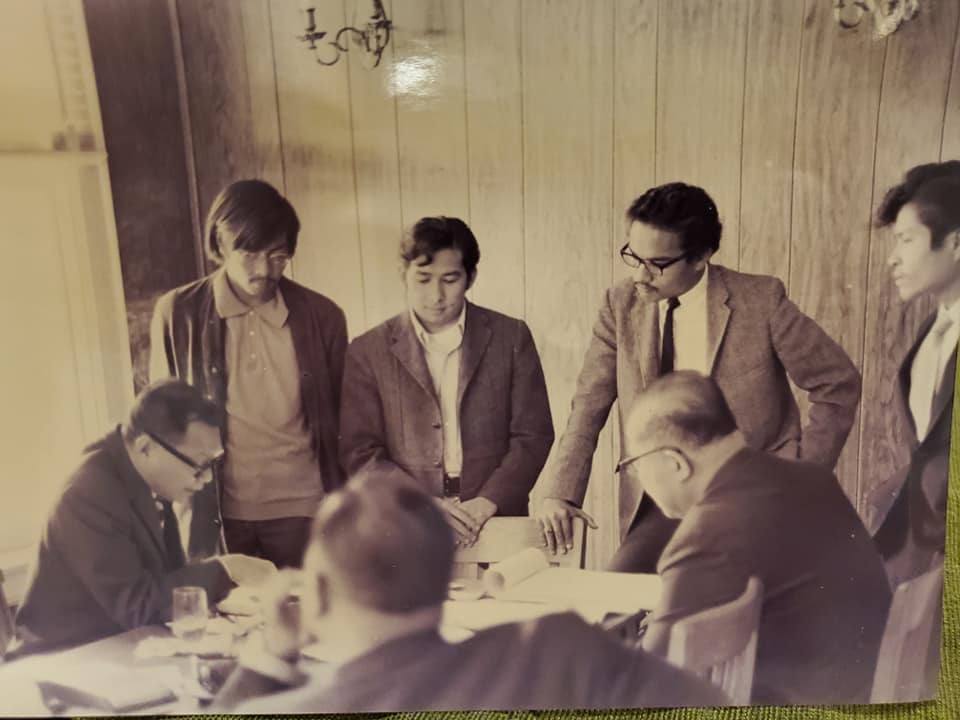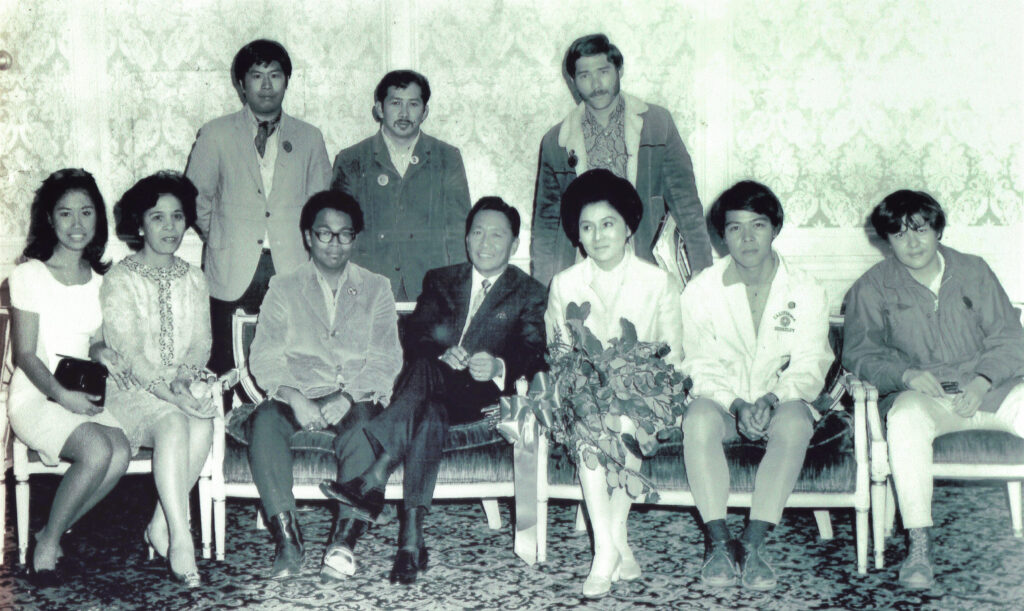Pat became a student at SF State in 1967. He witnessed the strong organization structure, member engagement and political activism of the Black Student Union (BSU). He approached the BSU in early Fall 1967 to join their organization. Not rejecting Pat, but rather encouraging him, the BSU sponsor advised Pat to instead create his own Filipino identity organization. Because of the racial tensions between the blacks and the whites on the campus, Filipinos were at times put in the middle to help settle disputes, according to Orvy Jundis, a fellow student activist who became a charter member of PACE. (Jundis, 2020) At the time, Filipinos represented between 1% and 3% of the population of the County of San Francisco. The numbers were less than 1% at SF State with the majority of Filipinos coming to study as international students. There were more female Filipino-American students as the males were being drafted and sent to fight in the Vietnam War.

At the encouragement of Professor Juan Martinez, the MASC sponsor who sided with the BSU, Pat founded PACE in October 1967 and began his efforts to build the organization with the mission that “PACE is a social action group striving to articulate the desires and needs of Filipino-American students,” says Ronald Quidachay, a charter member. Pat recruited PACE members through word-of-mouth.
He literally approached every Filipino student he saw on campus, whereupon he’d take the time to describe the goals and necessity of PACE. Pat also produced cultural and social events with Filipino-Americans and international students from the Philippines. The TWLF was founded February 29, 1968, and consisted of the BSU, Latin America Students Organization (LASO), El Renacimiento (Mexican American), PACE, and Intercollegiate Chinese for Social Action (ICSA).
They held the first organizational meeting which outlined the 15-point program. At the time of the meeting they had no name, but were officially named on March 5, 1968, with only four of the groups represented in the TWLF. The ICSA refused to join TWLF as they believed their opposition was not the white establishment, but the Chinese establishment
Even though the BSU called for black and brown students to strike on October 29, 1968, the call to strike wasn’t officially announced until November 6. That date was chosen to appease US Senator Alan Cranston as he did not want to lose the conservative vote. Students for a Democratic Society (SDS) supported the strike on November 7, 1968. TWLF joined the strike on November 9. Close to that period, the PACE student struggle was tied to Filipino Farm Workers struggles, thus PACE formally announced support for the farmworker’s strike on November 14. Chinese students (not the ICSA) announced Chinese establishment support for the strike on December 9, 1968.
Pat was the founder and head coordinator of PACE as well as a member and spokesperson of the Central Committee of the TWLF. He would hold strategy meetings in his bedroom of the family home whose attendees would be fed by Canuto. In these meetings, they would play round-robin chess and discuss politics, community outreach and strike strategy. Those meetings would be attended by Bob Ilumin, Ed Ilumin, Alex Soria, Ronald Quidachay, Manuel Difuntorum and Daniel Gonzales. Pat, who identified as a social science major, stated when S. I. Hayakawa was named President of the college, “Hayakawa will absolutely not be accepted by minority students and is a perfect example of how white people use non-whites against other non-whites.” Pat’s statement would be picked up by all the major newspapers on the west coast.
Pat is considered the first Filipino to teach Philippine history at SF State when he taught Social Science 77 – The Filipino-American Experience at the Experimental College in the Spring of 1969. In addition to his leadership at PACE and TWLF, Pat was also an elected student representative on the SF State Foundation’s Board of Governors which had full operational control of the Commons and Bookstore. Pat’s election helped his transition beyond PACE politics to the college’s governance of these important functions in the life of the students. No doubt Pat’s leadership of PACE and the TWLF during the student strike raised his profile among all the students.

Pat received the support of the Philippine Consulate General, Samson Saballones (1968-1970), who provided his consulate offices for PACE meetings and guidance on meeting the needs of the immigrant Filipinos seeking a better life in the US.
In 1969, when the Philippine President Ferdinand Marcos and First Lady Imelda Marcos were on their way to the funeral of President Dwight Eisenhower, Patrick and the PACE leadership met with President Marcos and his entourage at the Palace Hotel. By meeting with President Marcos, this was an opportunity for the PACE leadership to gain status for the work they were doing on behalf of the Filipino community in San Francisco.
The establishment of the College of Ethnic Studies enabled colleges and universities throughout the US to develop educational classes for people of color and today there are over 700 such programs. In 2019, the State of California approved the establishment of ethnic studies at the high school level.
Pat was unable to join the 2019 50th anniversary of the College of Ethnic Studies as he was too ill to participate. Pat passed away in August 2019, nearly a year before the California State University Trustees (CSU) made its July 22, 2020 announcement requiring all 430,000 undergrads pass an Ethnic Studies or Social Justice course to graduate. This announcement is the first major change to general education in its system in decades and will take effect in the 2023-24 academic year. Loren Blanchard, executive vice chancellor for academic and student affairs said, “The CSU is really proud of its heritage as the birthplace of ethnic studies.” It was a birth not without pain and struggle and the labor began with dedicated leaders like Pat Salaver who sought reform and worked to make it happen.